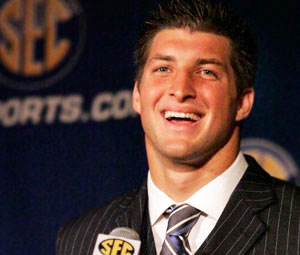The success of Tim Tebow has had a positive impact on families choosing to homeschool their children while pursuing athletics for them as well. Since being a homeschool dad I have noticed many similarities in homeschool education and athletic training. Those similarities lead me to believe that homeschooling and athletics are a perfect match!
There is a process to learning everything, no matter when or what age the learner begins the process. Homeschool education, specifically the classical method of learning, and athletic training share this same process of learning. This process is broken down into 3 stages: 1) knowledge (grammar stage), 2) understanding (dialectic stage), and 3) wisdom (rhetoric stage). Let’s take a look at how both homeschool and athletics fit into each stage. I will be using the subject of writing as the homeschool subject and basketball as the athletic example.
1) Training The Brain and Body
The first stage, called grammar or knowledge, is about training of the brain and body through repetition of basic facts and skills. A homeschooler learning how to write will practice holding a writing utensil, practice writing letters, spacing between letters and words, and letter form while learning basics such as capital and lower case letters. The athlete learning how to play basketball will practice dribbling, passing, and shooting while learning the purpose of the lines on the court and basic basketball terms.
The focus at this stage is to train your brain and body to learn through repetition. You may have heard the term muscle memory. Holding a pencil properly or typing on a computer keypad takes a measure of muscle memory just as does dribbling a basketball with both hands and shooting a proper jump shot. Without this proper foundation it will be difficult to become a great writer or basketball player.
2) Applying The Fundamentals
At the grammar stage a student or athlete may not understand how what they are learning relates to the subject or sport. I coach a 5-6 year old basketball team and they are all at the grammar stage of learning the game of basketball. Very few of them, if any, understand what it means when I say “take the ball out of bounds”, what it means to guard your man, or to look for an open teammate. Just the same, 5-6 year olds may not know what it means to “dress-up” a sentence by adding various stylistic techniques to their writing. The second stage of learning is where this is accomplished.
The facts and fundamentals learned at stage one are now connected and put to use, in the second stage, called dialectic or understanding. The writing student learns the relationship between words, sentences, and paragraphs. The basketball player learns strategy to incorporate the skills learned and how to apply them within the rules of the game. This stage of learning is enhanced by working within a group and/or team. Writing students brainstorm, share ideas, write and discuss one another’s writing. Basketball players are introduced to team concepts and competion against other teams.
3) Mastering and Displaying The Skills
The third stage of learning, called rhetoric or wisdom, is the full application and displaying of the skill. After repeating basic fundamentals to the point where a student athlete’s brain and body hurts and learning strategically how to apply those skills within the subject and sport, comes the stage of expression and teaching. Skilled writers and basketball players are the result of those who put in the work over time that sometimes result in blood, sweat, tears, yet ultimately produces a skill that people applaud and will even pay to experience.
The first two stages are not forgotten as they are still practiced to remain sharp and fundamentally sound, but now creativity comes about because a student or player no longer needs to think about each step or move. It now comes “naturally”. Homeschool writers now write their own stories or books, while intelligently critiquing and explaining the great writings of others. Basketball players now make fade-away jump shots, no-look passes, and killer-crossovers that leave their defenders grasping for air. Both the homeschool student and the athlete have learned and developed a skill that can be shared and appreciated by others.
Become Familiar With The Classical Homeschool Model
As previously stated, this model of learning is applied to most every subject and skill, although sometimes it is unintentionally applied. Intentionally applying this model of learning to schooling as well as athletics can help create better trained students and athletes. Even if you aren’t a homeschool parent or student you should become familiar with this model and apply it to the various subjects and skills you would like to teach, learn, or develop. After all the homeschooling model and athletic training are a perfect match.
Question: Are you currently learning a new skill? If so, what stage of learning are you at this point?

